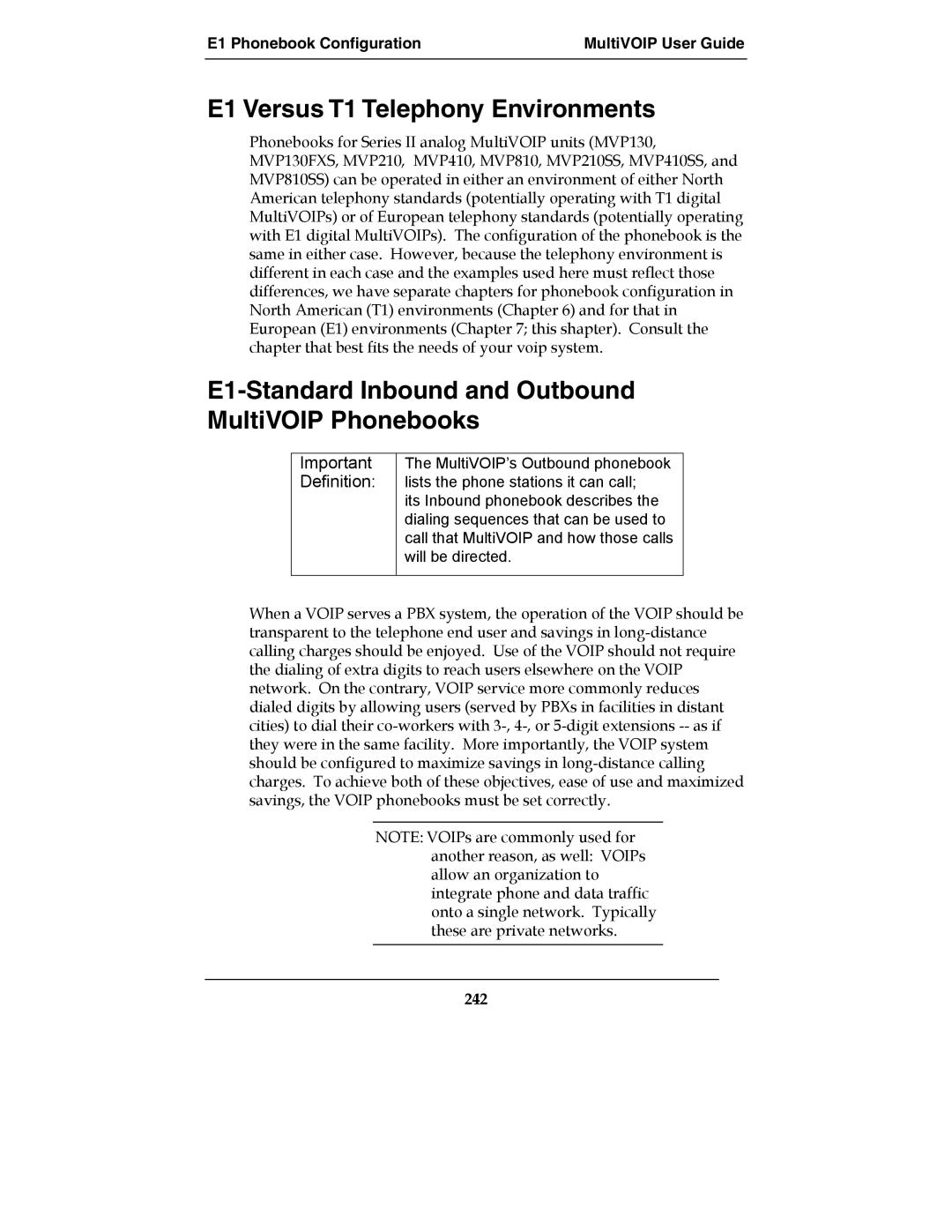
E1 Phonebook Configuration | MultiVOIP User Guide |
|
|
E1 Versus T1 Telephony Environments
Phonebooks for Series II analog MultiVOIP units (MVP130, MVP130FXS, MVP210, MVP410, MVP810, MVP210SS, MVP410SS, and MVP810SS) can be operated in either an environment of either North American telephony standards (potentially operating with T1 digital MultiVOIPs) or of European telephony standards (potentially operating with E1 digital MultiVOIPs). The configuration of the phonebook is the same in either case. However, because the telephony environment is different in each case and the examples used here must reflect those differences, we have separate chapters for phonebook configuration in North American (T1) environments (Chapter 6) and for that in European (E1) environments (Chapter 7; this shapter). Consult the chapter that best fits the needs of your voip system.
E1-Standard Inbound and Outbound MultiVOIP Phonebooks
Important Definition:
The MultiVOIP’s Outbound phonebook lists the phone stations it can call;
its Inbound phonebook describes the dialing sequences that can be used to call that MultiVOIP and how those calls will be directed.
When a VOIP serves a PBX system, the operation of the VOIP should be transparent to the telephone end user and savings in
NOTE: VOIPs are commonly used for another reason, as well: VOIPs allow an organization to integrate phone and data traffic onto a single network. Typically these are private networks.
